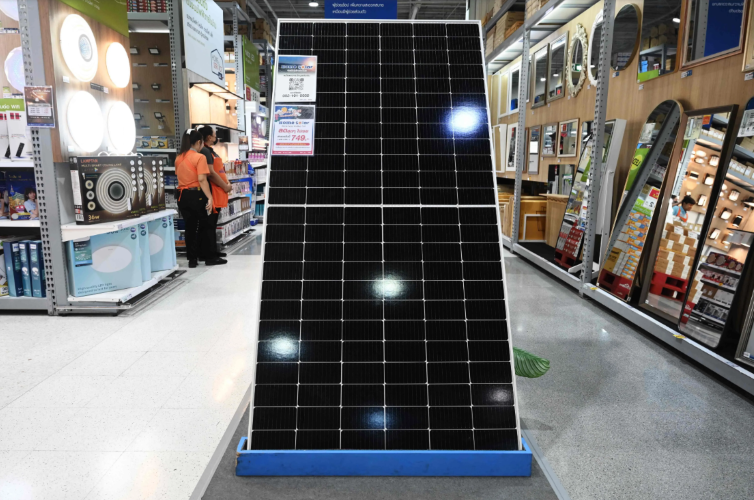[BANGKOK]
Massive planned US duties on solar panels made in South-east Asia could be a
chance for the region to ramp up its own long-stalled energy transition,
experts say.
Earlier this
month, Washington announced plans for hefty duties on solar panels made in
Cambodia, Vietnam, Thailand and Malaysia.
The levies
follow an investigation, launched before US President Donald Trump took office,
into “unfair practices” in the countries, particularly by Chinese-headquartered
firms.
If approved next
month, they will pile upon tariffs already imposed by the Trump administration,
including blanket 10per cent levies for most countries, and 145 per cent on
Chinese-made goods.
For the US
market, the consequences are likely to be severe. China makes eight out of
every 10 solar panels globally, and controls 80 per cent of every stage of the
manufacturing process.
The new tariffs
“will practically make solar exports to US impossible commercially”, said Putra
Adhiguna, managing director at the Energy Shift Institute think tank.
South-east Asia
accounted for nearly 80 per cent of US solar panel imports in 2024.
And while
investment in solar production has ramped up in the United States in recent
years, the market still relies heavily on imported components.
For Chinese
manufacturers, already dealing with a saturated domestic market, the raft of
tariffs is potentially very bad news.
Many shifted
operations to South-east Asia hoping to avoid punitive measures imposed by
Washington and the European Union as they try to protect and nurture domestic
solar industries.
The proposed new
duties range from around 40 per cent for some Malaysian exports to an
eye-watering 3,521 per cent for some Cambodia-based manufacturers.
Tariffs
‘accelerate’ transition
But there may be
a silver lining for the region, explained Ben McCarron, managing director at
Asia Research & Engagement.
“The tariffs and
trade war are likely to accelerate the energy transition in South-east Asia,”
he said.
China will
“supercharge efforts” in regional markets and push for policy and
implementation plans to “enable fast adoption of green energy across the
region”, driven by its exporters.
Analysts have
long warned that countries in the region are moving too slowly to transition
from planet-warming fossil fuels such as coal.
“At the current
pace, it (South-east Asia) risks missing out on the opportunities provided by
the declining costs of wind and solar, now cheaper than fossil fuels,” said
energy think tank Ember in a report last year.
For example,
Malaysia relied on fossil fuels for over 80 per cent of its electricity
generation last year.
It aims to
generate 24 per cent from renewables by 2030, a target that has been criticised
as out of step with global climate goals.
The tariff
regime represents a double opportunity for the region, explained Muyi Yang,
senior energy analyst at Ember.
So far, the
local solar industry has been “largely opportunistic, focused on leveraging
domestic resources or labour advantages for export gains”, he told AFP.
Cut off from the
US market, it could instead focus on local energy transitions, speeding green
energy uptake locally and driving a new market that “could serve as a natural
hedge against external volatility”.
Still, replacing
the US market will not be easy, given its size and the relatively nascent state
of renewables in the region.
“Success hinges
on turning this export-led momentum into a homegrown cleantech revolution,”
said Yang.
“Clearance
prices” may be attractive to some, but countries in the region and beyond may
also be cautious about a flood of solar, said Adhiguna.
Major markets
such as Indonesia and India already have measures in place intended to favour
domestic solar production.
“Many will
hesitate to import massively, prioritising trade balance and aims to create
local green jobs,” he said. AFP
Source: The
Business Times (Published 4/5/2025)
Link: US
solar tariffs could drive Asia transition boom - The Business Times
June 26, 2025













